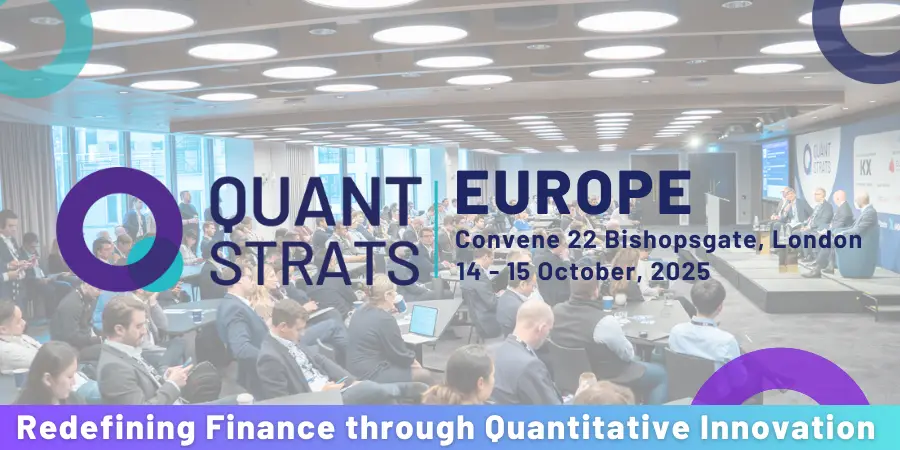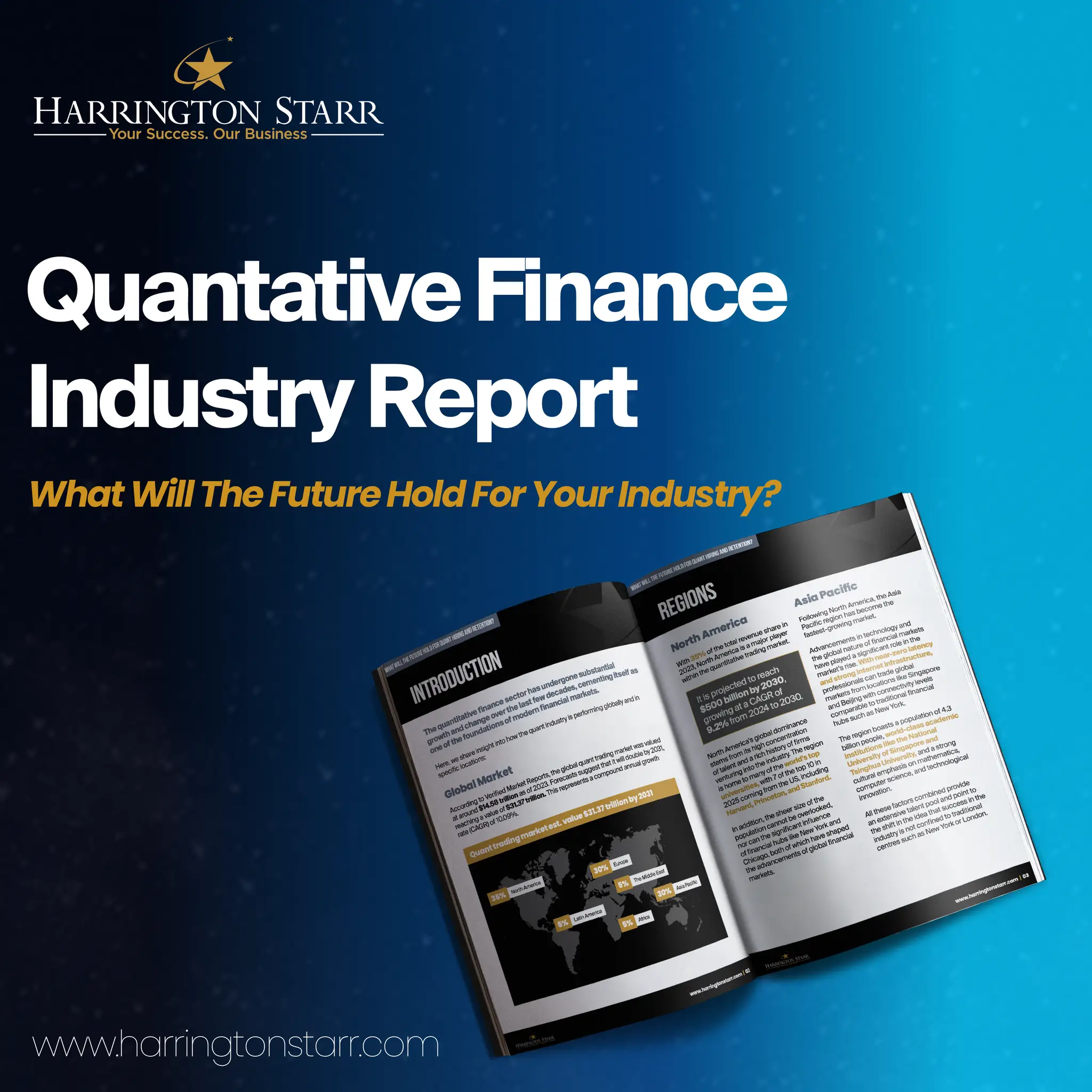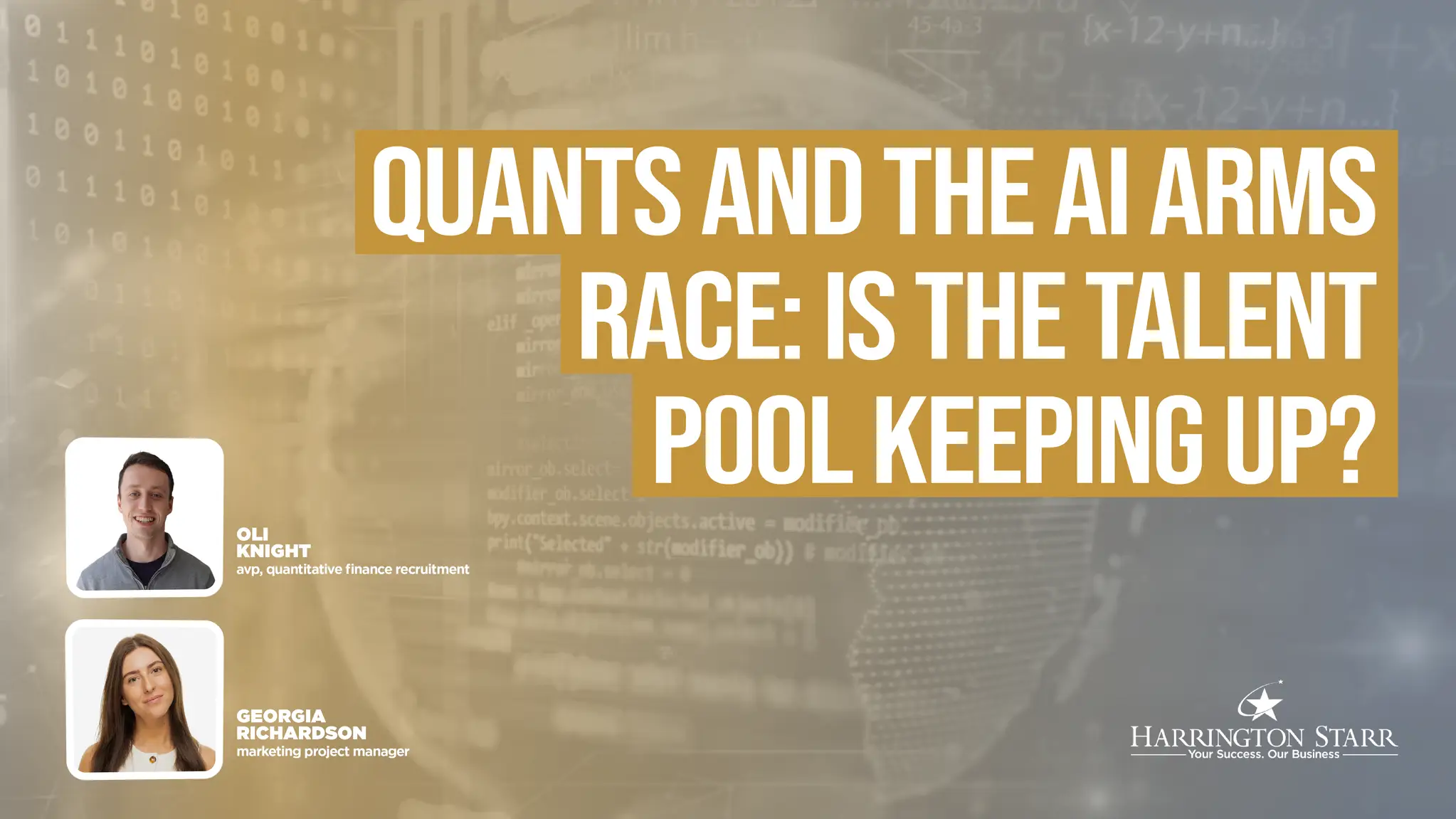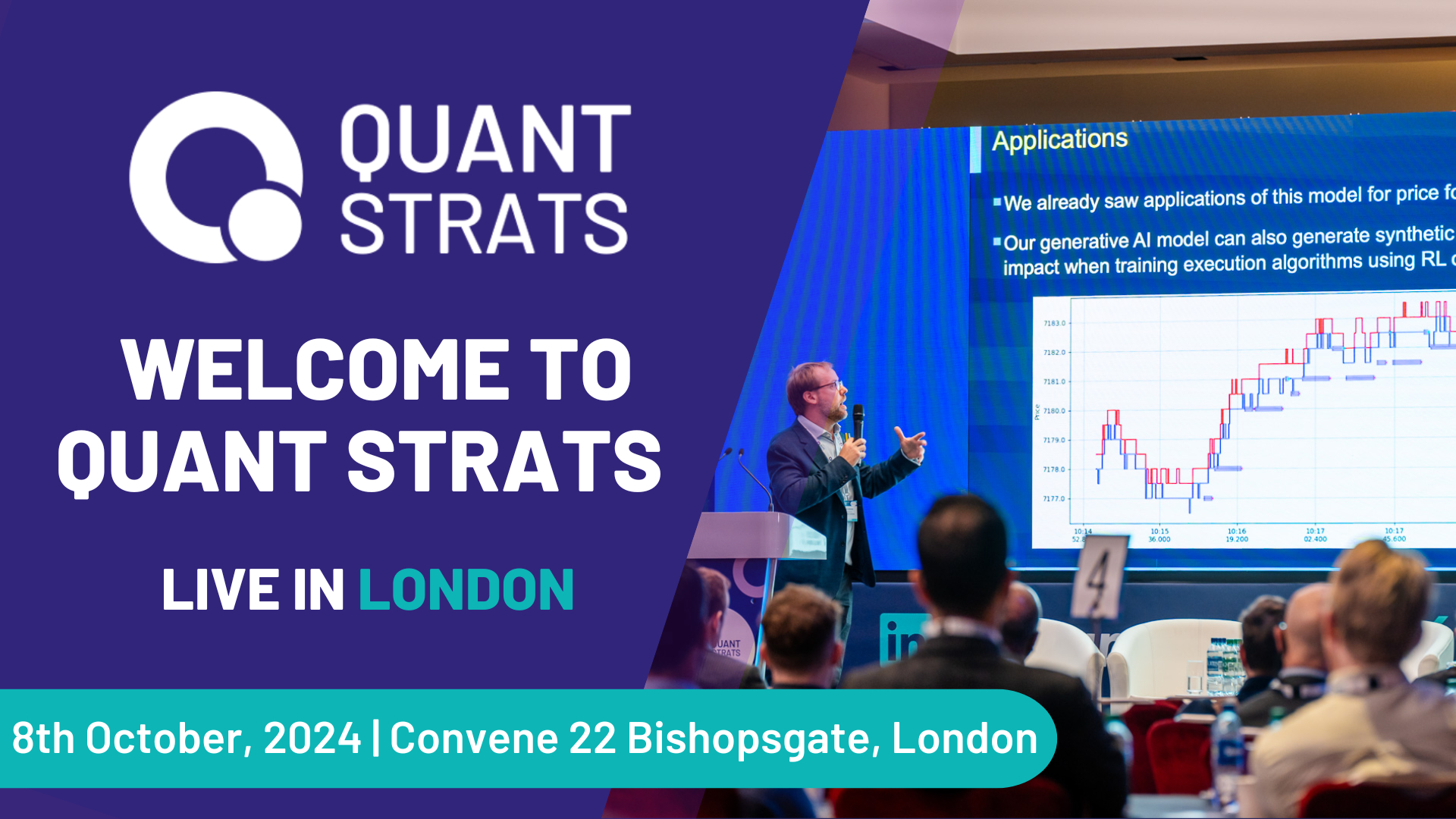
An in-depth look at the evolving demands of AI-driven quantitative finance and how Quant Trading/ Research leaders are adapting their hiring strategies.
The Rise of AI in Quant Finance
Over the past decade, the world of quantitative finance has undergone a radical shift. Traditionally driven by statistical models, high-frequency trading, and time-series analysis, the quant domain is now experiencing a new wave of disruption, fuelled by artificial intelligence (AI), machine learning (ML), and most recently, generative AI.
This isn’t just a change in tooling. It’s a structural evolution that redefines how alpha is generated, how data is processed, and crucially, what kinds of people quant teams need to hire. For firms at the frontier of Quant innovation, the question isn’t whether to adopt AI, but whether they have the right people to implement it.
So, is the quantitative finance talent pool keeping up with the pace of change?
From Classical Quants to AI-First Quant Teams: New Skills in Demand
Searches like "what skills are needed for quant jobs in AI?" or "how to build a machine learning quant team?" are increasingly common among Quant Research leaders and Heads of Quant.
Once, a successful quant team might consist of PhDs in mathematics, statistics, or physics, individuals skilled in linear regression, Monte Carlo simulations, and C++ programming. Today, however, these classical techniques are being supplemented or replaced by:
Transformer models and LLMs for textual alpha from earnings calls, filings, and social media.
- Reinforcement learning for trading strategy optimisation in volatile markets.
- Neural networks and deep learning frameworks like TensorFlow and PyTorch.
- AutoML and generative pipelines for signal discovery and risk modelling.
This shift has expanded the very definition of a “quant.” The new generation of AI-first quant roles demands a blend of statistical rigour, software engineering, ML fluency, and domain-specific knowledge.
And that’s where the talent challenge begins.
The Quant Talent Gap: Why Firms Struggle to Hire AI-Ready Quants
Many Quant Trading/ Research hiring managers now search for “quantitative finance talent with machine learning experience” or “how to hire a quant with AI skills.” Unfortunately, the available talent doesn’t always meet these new hybrid demands.
Three Mismatches We're Seeing in the Market:
- Theoretical AI expertise without production experience
Fresh PhD grads and academic researchers understand AI in theory, but often lack the ability to deploy models in production environments with latency constraints.
- Traditional finance quants lacking AI exposure
Highly experienced quants may be brilliant modellers but struggle with modern ML toolkits, cloud-native architectures, or GPU compute workflows.
- AI engineers without financial acumen:
Candidates from Big Tech often lack an understanding of market microstructure, risk parameters, or regulatory constraints, making them less effective in trading-focused roles.
In short, finding talent who can navigate the full spectrum, from designing a novel deep learning model to implementing it on a trading desk, is increasingly rare.
How AI Is Reshaping Quantitative Finance Recruitment
For those searching online for “how to hire quants for AI-driven trading” or “quant ML hiring,” the hiring market looks very different in 2025.
Emerging Quant Roles We’re Now Recruiting For:
- Quant Machine Learning Engineer
Combines advanced statistics with practical ML model building and deployment. - MLOps Engineer for Quant Teams
Specialises in continuous integration and delivery pipelines for ML models in production. - AI Product Quant Lead
Acts as the bridge between research and application, often seen in AI-native Quant startups. - LLM Quant Analyst
A niche but fast-growing role, where analysts use large language models to uncover market-relevant insights from textual data.
These are not traditional job titles, and the candidates filling them don’t always come from traditional paths. That’s why quantitative finance staffing in this space requires specialist knowledge, not just in CV screening, but in team design, hiring strategy and organisational structure.
How to Write the Perfect Job Spec for an AI-Fluent Quant
Hiring top-tier quant talent in 2025 starts long before the interview; it starts with the job description. Yet, many firms are still using outdated or overly generic job specs that don’t reflect the real demands of today’s AI-driven environment.
A poor spec won’t just attract the wrong candidates, it will repel the right ones.
What today’s AI-first quant candidates look for in a job spec:
- Clarity on purpose: What problem will they be solving? How does this role drive alpha or innovation?
- Specific technologies: Generic terms like “machine learning experience” are vague. Mention PyTorch, TensorFlow, Hugging Face, cloud platforms, or specific libraries.
- Realistic expectations: Asking for 7+ years of experience with tools that have existed for 3 years won’t inspire confidence.
- Focus on output, not input: What outcomes are expected—new models, model deployment, signal generation, etc.?
Common pitfalls to avoid:
- Reusing specs from traditional quant roles that don't reflect AI workflows.
- Overemphasising academic pedigree at the expense of practical experience.
- Including every buzzword in the AI glossary, without prioritisation.
Better job specs lead to better candidate matches. In a hyper-competitive quant hiring market, your ability to articulate what success looks like will define your hiring velocity.
How Quant Leaders Are Solving the Quant AI Hiring Challenge
Rather than trying to find unicorn candidates, the most successful Quant Trading firms are rethinking how they structure teams and approach recruitment.
1. Upskilling Existing Quants in AI
Some firms are investing in deep learning training programs for their current teams, bringing in AI mentors or partnering with research institutions to embed skills internally.
2. Hiring for Capability and Curiosity, Not Just Credentials
The best quant ML candidates aren’t always those from the top universities. Firms are now valuing:
- GitHub portfolios over GPAs
- Kaggle competition results over cover letters
- End-to-end ML project experience over pure theory
3. Building Cross-Functional Pods
Rather than siloing roles, Quant Trading firms are creating agile, cross-functional squads made up of quant researchers, software engineers, ML experts, and product managers.
4. Using Contract Quants to Test Emerging Technologies
Need someone to experiment with LLMs in your alpha research pipeline? Contract quant developers are increasingly used for high-impact, low-commitment exploration.
Why Traditional Quant Hiring Strategies Are Failing
Hiring for quant roles in 2025 using 2015 tactics is a recipe for stagnation. The market is moving too fast, and competitors are outpacing those who delay.
Here’s what happens when hiring lags behind tech:
- Innovation stalls. The best models don’t get built because the right talent isn’t in the room.
- Opportunities are missed. GenAI applications in ESG scoring, alt data signals, and sentiment analysis pass you by.
- Attrition rises. Frustrated team members leave for firms with better infrastructure, more learning opportunities, or more relevant challenges.
- Recruitment costs spiral. The longer a critical quant role stays unfilled, the more it costs in lost productivity.
Modern quant hiring strategy requires market insight, speed, and adaptability, not just job board posts and hope.
What AI-Ready Quant Candidates Want in 2025
If you're searching for “how to attract top quant talent in AI,” the answer lies in understanding what truly motivates this new generation of professionals.
It's no longer just about compensation. The best quant candidates look for:
Access to cutting-edge tools and compute environments (think: cloud GPUs, modern ML libraries)
- Intellectual freedom and R&D time
- Clear career progression with technical leadership paths
- Open culture around knowledge-sharing, research, and publishing
- Collaborative, cross-disciplinary teams, not isolated ivory towers
Firms that embrace these qualities are attracting and retaining the best talent, often without needing to be the highest payers in the market.
Quantitative Finance Recruitment Trends We’re Seeing on the Ground
As a specialist in quantitative finance recruitment for Quant Trading firms in the US and UK, we see real-time hiring shifts across startups, hedge funds and scale-ups.
Here’s what we’re noticing right now:
- Demand for AI-fluent quants is outpacing supply. Especially in New York, London, and Amsterdam.
- Time-to-hire is increasing. Not due to candidate shortages, but due to unclear hiring specs and overextended internal teams.
- The smartest firms are planning ahead. They're building candidate pipelines before roles are live, ensuring first-mover advantage.
- Contract quant hiring is becoming a strategic weapon. Particularly for experimentation, MVP development, and AI prototyping.
The Global View: How Quant Hiring Differs Between the US and UK
While the core technical competencies of top quant candidates are globally consistent, hiring dynamics vary significantly between regions. Having offices in both the US and UK gives us a unique lens on how firms in each geography are approaching the AI talent race.
In the US (especially New York):
- Salaries are higher, particularly for roles involving production ML or alpha signal generation.
- Candidates often expect faster hiring processes and more autonomy.
- Quant Trading firms are more likely to poach from Big Tech and Silicon Valley AI labs.
- Hybrid/remote roles are widely accepted, less resistance than pre-2020 norms.
In the UK (especially London):
More traditional quant pedigree still dominates some sectors, especially in buy-side institutions.
- Contract and interim talent are used more strategically, especially in start-ups and trading tech firms.
- AI adoption in trading desks is increasing, but often with a stronger emphasis on interpretability and regulation.
- Sponsorship and work permits are more commonly requested, particularly for recent grads and academic profiles.
We’re also seeing growth in Amsterdam and Zurich as quant and data science hubs, though competition for AI-native talent in those markets is fierce.
Overall, hiring strategy must be tailored to regional expectations; what works in New York won’t always resonate in London, and vice versa.
How to Future-Proof Your Quant Team for the AI Era
If you’re leading a quant team or scaling a data-driven trading product, it’s time to assess whether your hiring model matches the future you're trying to build.
Ask yourself:
- Do we have the right blend of statistical, engineering, and AI talent?
- Are our hiring specs up to date with the skills we need, not just what we used to hire?
- Do we have access to both permanent and contract quant professionals?
- Can we move fast enough to secure top talent before our competitors?
Because in the AI arms race, talent, not tech, may be the biggest differentiator.
Need Support? Our Quant Recruitment Team Can Help
We’re not here to sell you CVs. We’re here to help you solve a problem: how to attract, evaluate, and hire the quants who can future-proof your business.
Whether you're:
- Launching an AI-native research pod
- Expanding into a new region like New York or London
- Or simply unsure whether to hire perm or contract
We can provide market intelligence, talent strategy advice, and access to the kinds of profiles that most firms can't find alone.








